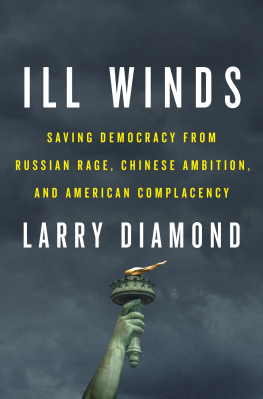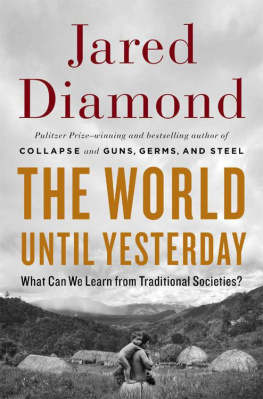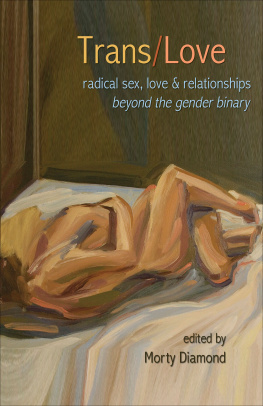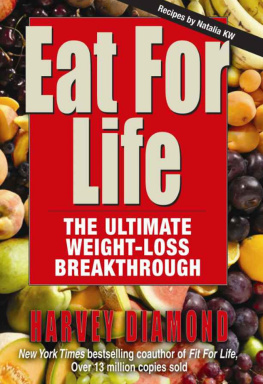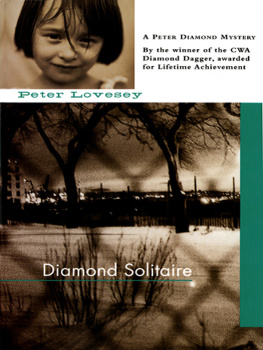Diamond - By Lisa M. Diamond: Sexual Fluidity: Understanding Womens Love and Desire [Paperback]
Here you can read online Diamond - By Lisa M. Diamond: Sexual Fluidity: Understanding Womens Love and Desire [Paperback] full text of the book (entire story) in english for free. Download pdf and epub, get meaning, cover and reviews about this ebook. City: Cambridge, Mass, year: 2008, publisher: Harvard University Press, genre: Romance novel. Description of the work, (preface) as well as reviews are available. Best literature library LitArk.com created for fans of good reading and offers a wide selection of genres:
Romance novel
Science fiction
Adventure
Detective
Science
History
Home and family
Prose
Art
Politics
Computer
Non-fiction
Religion
Business
Children
Humor
Choose a favorite category and find really read worthwhile books. Enjoy immersion in the world of imagination, feel the emotions of the characters or learn something new for yourself, make an fascinating discovery.
- Book:By Lisa M. Diamond: Sexual Fluidity: Understanding Womens Love and Desire [Paperback]
- Author:
- Publisher:Harvard University Press
- Genre:
- Year:2008
- City:Cambridge, Mass
- Rating:5 / 5
- Favourites:Add to favourites
- Your mark:
- 100
- 1
- 2
- 3
- 4
- 5
By Lisa M. Diamond: Sexual Fluidity: Understanding Womens Love and Desire [Paperback]: summary, description and annotation
We offer to read an annotation, description, summary or preface (depends on what the author of the book "By Lisa M. Diamond: Sexual Fluidity: Understanding Womens Love and Desire [Paperback]" wrote himself). If you haven't found the necessary information about the book — write in the comments, we will try to find it.
Diamond: author's other books
Who wrote By Lisa M. Diamond: Sexual Fluidity: Understanding Womens Love and Desire [Paperback]? Find out the surname, the name of the author of the book and a list of all author's works by series.
By Lisa M. Diamond: Sexual Fluidity: Understanding Womens Love and Desire [Paperback] — read online for free the complete book (whole text) full work
Below is the text of the book, divided by pages. System saving the place of the last page read, allows you to conveniently read the book "By Lisa M. Diamond: Sexual Fluidity: Understanding Womens Love and Desire [Paperback]" online for free, without having to search again every time where you left off. Put a bookmark, and you can go to the page where you finished reading at any time.
Font size:
Interval:
Bookmark:
SEXUAL FLUIDITY
SEXUAL FLUIDITY
Understanding Womens Love and Desire
LISA M. DIAMOND
Harvard University Press
Cambridge, Massachusetts
London, England
Copyright 2008 by the President and Fellows of Harvard College
All rights reserved
Jacket image Pete Leonard/zefa/Corbis
Jacket design: Jill Breitbarth
First Harvard University Press paperback edition, 2009.
Library of Congress Cataloging-in-Publication Data
Diamond, Lisa M. (Lisa Michelle)
Sexual fluidity : understanding womens love and desire / Lisa M. Diamond.
p. cm.
Includes bibliographical references and index.
ISBN 978-0-674-02624-7 (cloth: alk. paper)
ISBN 978-0-674-03226-2 (pbk.)
1. WomenSexual behavior. 2. Bisexuality. I. Title. HQ29.D523 2008
306.765082dc22 2007027806
This book is dedicated to
the 100 women who have so
generously shared their
stories with me.
Contents
In 1997, the actress Anne Heche began a widely publicized romantic relationship with the openly lesbian comedian Ellen DeGeneres after having had no prior same-sex attractions or relationships. The relationship with DeGeneres ended after two years, and Heche went on to marry a man. The actress Cynthia Nixon of the HBO series Sex and the City developed a serious relationship with a woman in 2004 after ending a fifteen-year relationship with a man. Julie Cypher left a heterosexual marriage for the musician Melissa Etheridge in 1988. After twelve years together, the pair separated and Cypherlike Hechehas returned to heterosexual relationships. In other cases, longtime lesbians have unexpectedly initiated relationships with men, sometimes after decades of exclusively same-sex ties (examples include the feminist folk singer Holly Near, the activist and writer Jan Clausen, and Deborah Sundahl, a founding editor of the lesbian magazine On Our Backs). Whats going on? Are these women confused? Were they just going through a phase before, or are they in one now?
Consider, too, the growing number of popular terms that have been coined to describe women with changing patterns of same-sex and other-sex behavior, such as heteroflexibility, has-bian, and LUGlesbian until graduation. This new lexicon has been matched by increasing media depictions of women who pursue sexual contact that runs counter to their avowed sexual orientation, ranging from the much-ballyhooed kiss between Madonna and Britney Spears at the MTV Video Music Awards to films such as Kissing Jessica Stein and Chasing Amy, which depicts a lesbian becoming involved with a man, contrary to the more widespread depictions of heterosexual women becoming involved in same-sex relationships.
The reason such cases are so perplexing is that they flatly contradict prevailing assumptions about sexual orientation. These assumptions hold that an individuals sexual predisposition for the same sex or the other sex is an early-developing and stable trait that has a consistent effect on that persons attractions, fantasies, and romantic feelings over the lifespan. What few people realize, however, is that these assumptions are based primarily on mens experiences because most research on sexual orientation has been conducted on men. Although this model of sexual orientation describes men fairly accurately, it does not always apply so well to women.
Historically, women who deviated from this model by reporting shifts in their sexuality over timeheterosexual women falling in love with female friends, lesbian women periodically dating menwere presumed few in number and exceptional in nature. In other words, they were just inconvenient noise cluttering up the real data on sexual orientation. Yet as research on female sexuality has increased over the years, these exceptional cases now appear to be more common than previously thought. In short, the current conventional wisdom about the nature and development of sexual orientation provides an incomplete picture of womens experiences. Researchers now openly acknowledge that despite significant advances in the science of sexuality over the past twenty years, female sexual orientation is, for the time being, poorly understood.
This situation is now changing. As scientists have begun investigating female and male sexual orientation as distinct phenomena instead of two sides of the same coin, consensus is gradually building on why women appear so different from men. Specifically, we have found that one of the fundamental, defining features of female sexual orientation is its fluidity. We are now on the brink of a revolutionary new understanding of female sexuality that has profound scientific and social implications.
A Brief History of Fluidity
Sexual fluidity, quite simply, means situation-dependent flexibility in womens sexual responsiveness. This flexibility makes it possible for some women to experience desires for either men or women under certain circumstances, regardless of their overall sexual orientation. In other words, though womenlike menappear to be born with distinct sexual orientations, these orientations do not provide the last word on their sexual attractions and experiences. Instead, women of all orientations may experience variation in their erotic and affectional feelings as they encounter different situations, relationships, and life stages. This is why a woman like Anne Heche can suddenly find herself falling madly in love with Ellen DeGeneres after an exclusively heterosexual past, and why a longtime lesbian can experience her very first other-sex attractions in her late forties.
The notion of sexual fluidity is not a new one. Rather, evidence for this phenomenon has circulated in the scientific literature for decades, though it has tended to be submerged in the data rather than explicitly theorized. They concluded that early childhood influences on sexuality (whatever they may be) were not immutable, and that most individuals were unaware of their own capacity for change in sexuality over time.
In interviews with fourteen nonheterosexual women, the psychologist Joan Sophie found that many of the women experienced unexpected transitions in their self-identification and sexual expression over time. Sophie concluded that conventional identity models, with their emphasis on fixed selves, needed to be revised to account for such changes. Individuals rated their current, past, and ideal patterns of attraction, behavior, and identity, making explicit the existence of prior and perhaps future change. However, this time-sensitive approach did not take hold, and researchers generally continued assessing only current attractions, identities, and behaviors.
Around the same time, other academic fields began giving greater consideration to sexual fluidity. In 1984 the anthropologist Gilbert Herdt published a now-famous account of ritualized homosexuality among adolescent boys in Melanesia. What was notable about this practice was its developmental specificity. Unmarried men pursued only same-sex encounters during their adolescent years out of a belief that this practice was necessary for them to reach full maturity as men. Once they were adults, same-sex activity ceased (with a few exceptions); they then married and pursued only other-sex activity. Herdts account of such an abrupt developmental transition from same-sex to other-sex sexuality showed that our Western notion of fixed sexual orientations was culturally specific. We might view homosexuality as an inborn predisposition, but other cultures expected and even arranged for drastic changes in same-sex and other-sex desires and practices over the life course.
The anthropologist Evelyn Blackwood made the same observation in her extensive review of female same-sex sexuality across non-Western cultures, underscoring the limitations of the Western notion of fixed sexual orientations. These perspectives were consistent with a broad class of social constructionist models of sexuality (discussed in more detail in the next chapter), which posited that sexual identities did not exist as fixed types but were created and given meaning through social interactions and cultural ideologies. Most of the scholars advocating this perspective were not specifically interested in sexual fluidity, but they highlighted the evidence for it in order to challenge conventional, biologically determinist views of sexuality.
Next pageFont size:
Interval:
Bookmark:
Similar books «By Lisa M. Diamond: Sexual Fluidity: Understanding Womens Love and Desire [Paperback]»
Look at similar books to By Lisa M. Diamond: Sexual Fluidity: Understanding Womens Love and Desire [Paperback]. We have selected literature similar in name and meaning in the hope of providing readers with more options to find new, interesting, not yet read works.
Discussion, reviews of the book By Lisa M. Diamond: Sexual Fluidity: Understanding Womens Love and Desire [Paperback] and just readers' own opinions. Leave your comments, write what you think about the work, its meaning or the main characters. Specify what exactly you liked and what you didn't like, and why you think so.

![Diamond By Lisa M. Diamond: Sexual Fluidity: Understanding Womens Love and Desire [Paperback]](/uploads/posts/book/138039/thumbs/diamond-by-lisa-m-diamond-sexual-fluidity.jpg)

